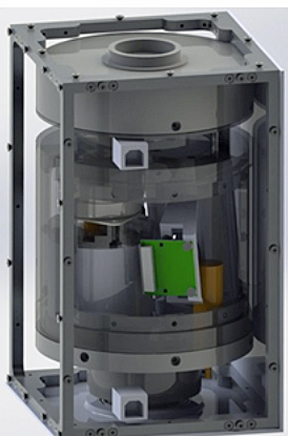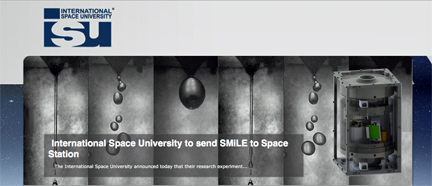
[SatNews] The International Space University has announced that their research experiment studying fluid behavior in reduced gravity conditions will fly to the International Space Station (ISS) in 2015 via NanoRacks, LLC, under its Space Act Agreement with NASA’s U.S. National Lab.

The experiment, Spun Microgravity Liquid Experiment (SMiLE), will investigate the physics behind droplet formation in microgravity conditions. Led by Dr. Barnaby Osborne and Professor Chris Welch, this is the culmination of nearly 10 years of research and testing. SMiLE will investigate liquid droplet dynamics, in particular the chaotic behavior of droplet formation in reduced gravity conditions and will be the first statistically relevant investigation into this phenomenon and provide valuable information to the designers of next generation terrestrial drop-on-demand applications.
To create the experiment, ISU partnered with the Australian Centre for Space Engineering Research (ACSER) at the University of New South Wales, Australia. Beyond the new science that SMiLE will perform, the experiment will be novel in several ways. SMiLE’s construction and operation are both in keeping with the new approach to access to space and all aspects of the experiment are designed to make low demands on the ISS and its astronaut crew. To this end, SMiLE is:
- Autonomous: SMiLE will autonomously perform its experiments and process its data. This means that after installation it will operate without any need for interaction with the ISS crew
- Low-impact: SMiLE uses only uses 2W continuous power. SMiLE performs data processing onboard to reduce the amount of data needing to be transmitted back to Earth
- Resource efficient: SMiLE centrifugally recycles its test fluid so that only a very small total amount (20 mL) is required
- Effectively manufactured: SMiLE uses new manufacturing processes (in particular 3D printing processes such as Selective Laser Sintering and Direct Metal Laser Sintering) to produce complex components economically while reducing its overall part count
“The ISS provides a critical environment for long-duration microgravity experiments such as SMiLE,” said Dr. Barnaby Osborne. “In space, we will be able gather more data in one week than we would be able to in one year on the ground.”

“Until now, research in microgravity has been difficult because of the limited range of opportunities,” continued Professor Chris Welch. “We are very pleased to be working with NanoRacks on SMiLE because they are the leading provider of rapid and effective access to space.”
“NanoRacks believes strongly that by lowering the barriers to ISS utilization, more and more important ideas such as this one will emerge,” said Jeffrey Manber, CEO of NanoRacks.
The NanoRacks infosite may be reached at http://nanoracks.com/
The International Space University infosite is located at http://www.isunet.edu/

